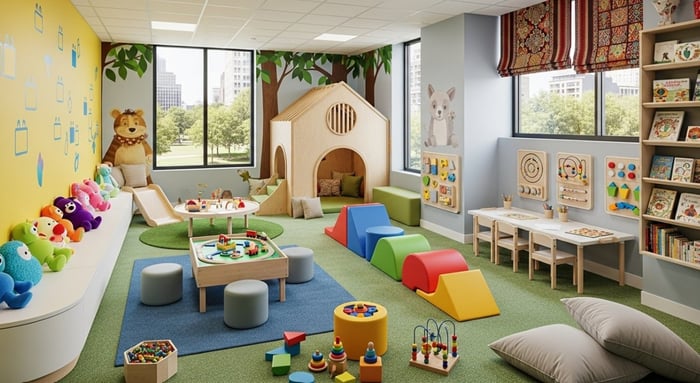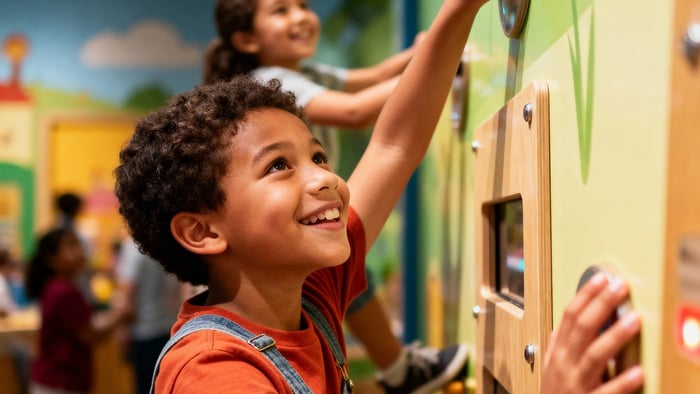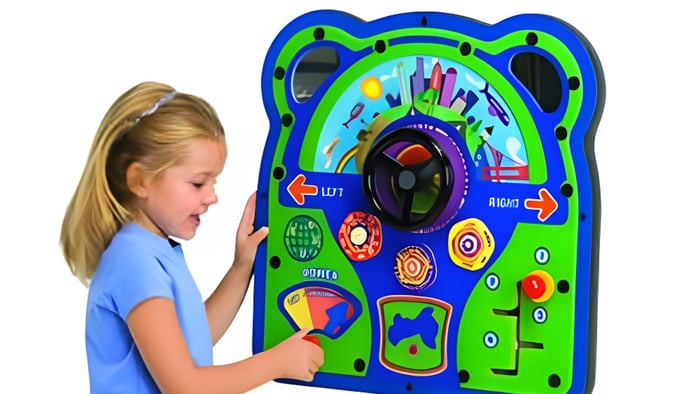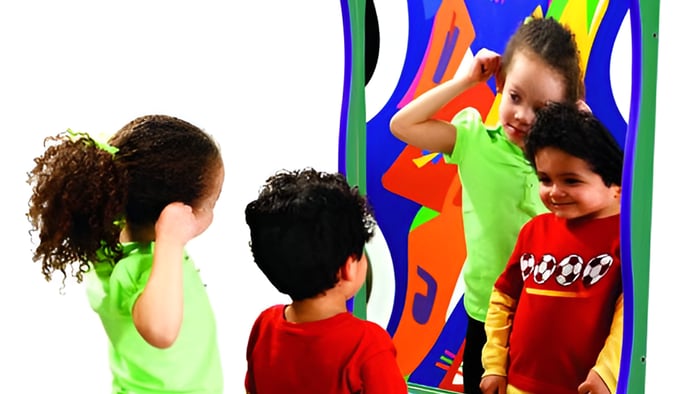
Funhouse Mirrors 101: What They Are & Why Kids Love Them
Table of Contents
Funhouse mirrors are more than just an amusing attraction at carnivals and amusement parks; they offer a unique blend of art, science, and entertainment that captivates people of all ages. These mirrors distort reflections in various ways, creating a visually stimulating experience that can make you laugh, question your perceptions, and even appreciate the complexities of how we see ourselves.
Grow.upp Hexagon Medium Safety Mirror
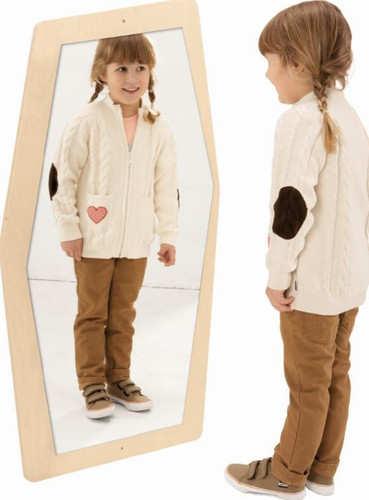
$1,188.44
Grow.upp Hexagon Medium Safety Mirror - Shatterproof Mirror for Early Learning, Sensory Play & Self-Awareness Support early childhood development with the Grow.upp Hexagon Medium Safety...… read more
What Are Funhouse Mirrors?
These mirrors are specially designed reflective surfaces that warp, twist, or elongate images. Unlike regular mirrors, which provide a true-to-life reflection, funhouse mirrors manipulate reality by altering the shape or size of the reflected image. This leads to a myriad of effects—some mirrors may make you look taller, while others might make you appear shorter, wider, or even more elongated.
The art of creating funhouse mirrors involves physics and design principles. The curved and irregular shapes of these mirrors play with light and angles, resulting in the unique distortions that make them so entertaining. The use of concave and convex surfaces allows for a variety of effects, each creating a different visual illusion.
The Different Types of Funhouse Mirrors
There are several popular types of fun mirrors, each offering a distinct experience:
- Bubble Mirrors: These mirrors are playful, multi-dome mirrors that create fun, distorted reflections to engage children's curiosity, support sensory development, and encourage self-awareness.
- Concave Mirrors: These mirrors curve inward, making reflections appear larger and closer. This effect can exaggerate features, making them seem more pronounced.
- Convex Mirrors: These mirrors curve outward, providing a broader view and often making objects appear smaller and further away. This can create a whimsical effect, shrinking the size of the reflection.
- Wavy Mirrors: These mirrors have undulating surfaces that create a ripple effect, distorting the reflection in a playful manner. They can make a person look like they are stretched or squished in unusual ways.
- Twisted Mirrors: These mirrors feature irregular twists, leading to more extreme distortions. They can create surreal reflections, making them particularly popular in funhouses.
The Science Behind the Fun
While funhouse mirrors are known for their silly, exaggerated reflections, the real magic lies in the science of optics. These mirrors work by manipulating the way light reflects off curved surfaces. All mirrors reflect light, but the shape of the mirror's surface changes how that light is bounced back to our eyes. Funhouse mirrors use intentionally warped designs—curving inward, outward, or in waves—to bend light in unexpected ways, creating the amusing distortions we associate with carnival fun.
To understand these effects, it helps to explore the basic principles of optical science. A concave mirror (curved inward like a bowl) causes light rays to converge at a focal point, which can make reflections appear stretched, enlarged, or even upside-down depending on your distance from the mirror. In contrast, a convex mirror (curved outward) spreads light rays outward, making reflections appear smaller or compressed. By combining different curvatures along a single surface, funhouse mirrors can make your head look tiny, your legs incredibly long, or your entire body look hilariously wavy.
These effects aren’t just amusing—they can also spark curiosity about physics, perception, and the nature of light itself. For children, funhouse mirrors offer an engaging, hands-on introduction to how science works in everyday life. Explore Wacky Reflections
The Psychological Aspect of Funhouse Mirrors
While these mirrors are often associated with laughter and lighthearted fun, their impact goes far beyond surface-level amusement. These whimsical mirrors offer a fascinating lens—both literally and figuratively—into how we see ourselves and interpret the world around us. By distorting physical reflections, funhouse mirrors invite us to question the accuracy, meaning, and emotional response we have toward our own image.
At first glance, most people react with amusement or curiosity. The stretched, squashed, or wavy versions of oneself can be unexpected and entertaining, breaking the seriousness with which we typically view our reflections. For many, it’s a moment of comic relief—a gentle reminder not to take ourselves too seriously. This playfulness can be liberating, especially for children, helping them build comfort and flexibility in how they perceive their bodies and expressions.
However, these distorted images can also spark deeper introspection. Seeing a reflection that deviates so drastically from one’s expectations can trigger questions about self-image, identity, and perception. This is especially relevant in a world where appearance often holds significant social weight. Carnival mirrors challenge the idea that there is one "correct" way to look and highlight the subjectivity of perception. They reveal how our brains are constantly interpreting, filtering, and sometimes misjudging what we see—whether it's in a mirror or in daily life.
In therapeutic or educational settings, this experience can be used intentionally. For individuals struggling with body image issues, funhouse mirrors may serve as a conversation starter or tool to illustrate how perception can be flexible and even humorous. They create a space where distortion is expected and accepted, offering an opportunity to detach self-worth from appearance and embrace the idea that how we see ourselves is shaped not just by physical reality, but also by emotional and societal influences.
Furthermore, funhouse mirrors can help promote empathy and social learning. In group settings, they often generate shared laughter and interaction, fostering connection and social bonding. Children especially benefit from this social engagement, using the mirror as a platform for role-playing, self-expression, and understanding differences.
In essence, fun house mirrors provide a rich, multi-layered experience. Behind the giggles lies a subtle but powerful invitation to reflect—on how we see ourselves, how others see us, and how much of that is shaped by more than just a mirror.
Giant Funhouse Giggle Mirror
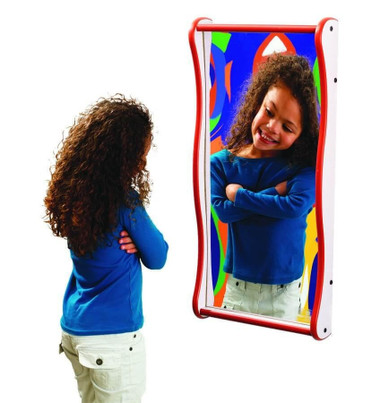
$305.90
Funhouse Giant Giggle Mirror - Oversized Double-Curve Sensory Mirror for Interactive Play Turn any children's space into a laughter-filled discovery zone with the Funhouse Giant...… read more
Applications of Funhouse Mirrors
While traditionally associated with carnivals and amusement parks, funhouse mirrors have evolved far beyond their roots to find a place in a wide range of creative, educational, and therapeutic environments. Their unique ability to distort reality in lighthearted and engaging ways makes them versatile tools that entertain, inspire, and even heal.
- Theme Parks and Amusement Centers:
Still one of the most iconic uses, these mirrors remain a staple in theme parks, adventure zones, and family entertainment centers. Children and adults alike delight in the silly reflections—tall and skinny, short and wide, or completely wavy—that provide a joyful, interactive experience. These mirrors often serve as both entertainment and photo opportunities, helping create lasting memories. - Art Installations and Exhibits:
Contemporary artists frequently use these mirrors in installations to explore deeper concepts such as identity, self-perception, and the fluid nature of reality. By distorting what we expect to see, these mirrors challenge viewers to reflect—literally and metaphorically—on how they perceive themselves and the world around them. Their interactive and experiential qualities make them a powerful medium for immersive and thought-provoking art. - Photo Booths and Events:
From weddings to corporate events, these mirrors are now being incorporated into modern photo booth setups. Their whimsical distortions add humor and creativity to event photography, giving guests a playful way to capture the moment. The photos serve as fun keepsakes that evoke laughter and nostalgia. - Interior Design and Home Decor:
Although not typically as exaggerated as carnival-style mirrors, the concept of visual distortion has made its way into home design. Designers are increasingly incorporating sculpted or warped mirror panels as bold statement pieces in modern interiors. These mirrors catch the eye, reflect light in dynamic ways, and add artistic flair to living spaces—blending functionality with visual interest. - Therapeutic and Educational Settings:
Funhouse mirrors are also used in therapy and child development programs. In therapeutic settings, especially those addressing body image or self-esteem issues, the mirrors can serve as conversation starters or tools for perspective-shifting. For young children, they support sensory development, emotional regulation, and self-awareness by offering a safe space for exploration and play. Occupational therapists and educators sometimes use them in sensory rooms or classrooms to engage students in self-recognition and body movement activities. - Retail and Commercial Spaces:
Retailers, especially those targeting children or family audiences, sometimes use funhouse mirrors in-store to create an engaging customer experience. They can be strategically placed to draw attention, entertain children while parents shop, or serve as part of branded photo spots that encourage social sharing.
Whether used for laughter, artistic expression, or developmental support, funhouse mirrors continue to captivate and adapt—bringing a sense of wonder wherever they're placed.
Royal King Children's Safety Mirror
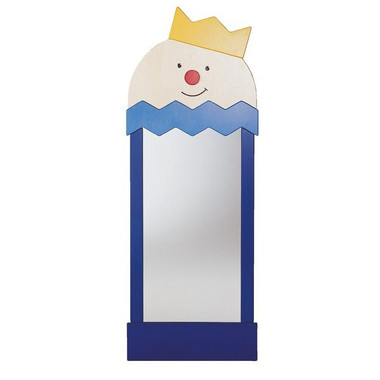
$899.84
King Safety Mirror - A Regal Fairy-Tale Reflection for Imaginative Play Transform any children's space into a storybook setting with the enchanting King Mirror. This...… read more
Buying Funhouse Mirrors
For those intrigued by funhouse mirrors and looking to incorporate them into personal spaces or events, selecting the right mirror is essential. Little People's Cove offers a variety of funhouse mirrors that can add joy and entertainment to any environment.
FAQs
What are funhouse mirrors used for with children?
Funhouse mirrors are popular in classrooms, libraries, waiting rooms, and play spaces because they encourage imaginative play, self-recognition, and social interaction. By distorting reflections in funny ways, they spark laughter, reduce anxiety in stressful settings (like medical offices), and help children explore concepts of body image, movement, and spatial awareness in a playful manner.
Are funhouse mirrors safe for kids?
Yes—when designed for children’s environments. High-quality funhouse mirrors use shatterproof acrylic or polycarbonate surfaces instead of glass, along with rounded frames and sturdy wall-mounting systems for stability. They are built to withstand heavy traffic while ensuring safety in schools, daycares, museums, and pediatric waiting rooms.
What developmental benefits do funhouse mirrors provide?
Funhouse mirrors support multiple areas of child development:
- Emotional growth: promote laughter, reduce stress, and build confidence.
- Cognitive skills: help children understand cause-and-effect as their movements create different reflections.
- Social learning: kids enjoy interacting with peers in front of mirrors, encouraging turn-taking and group play.
- Self-awareness: especially valuable during the “mirror stage” (6–18 months), fostering recognition and identity development.

